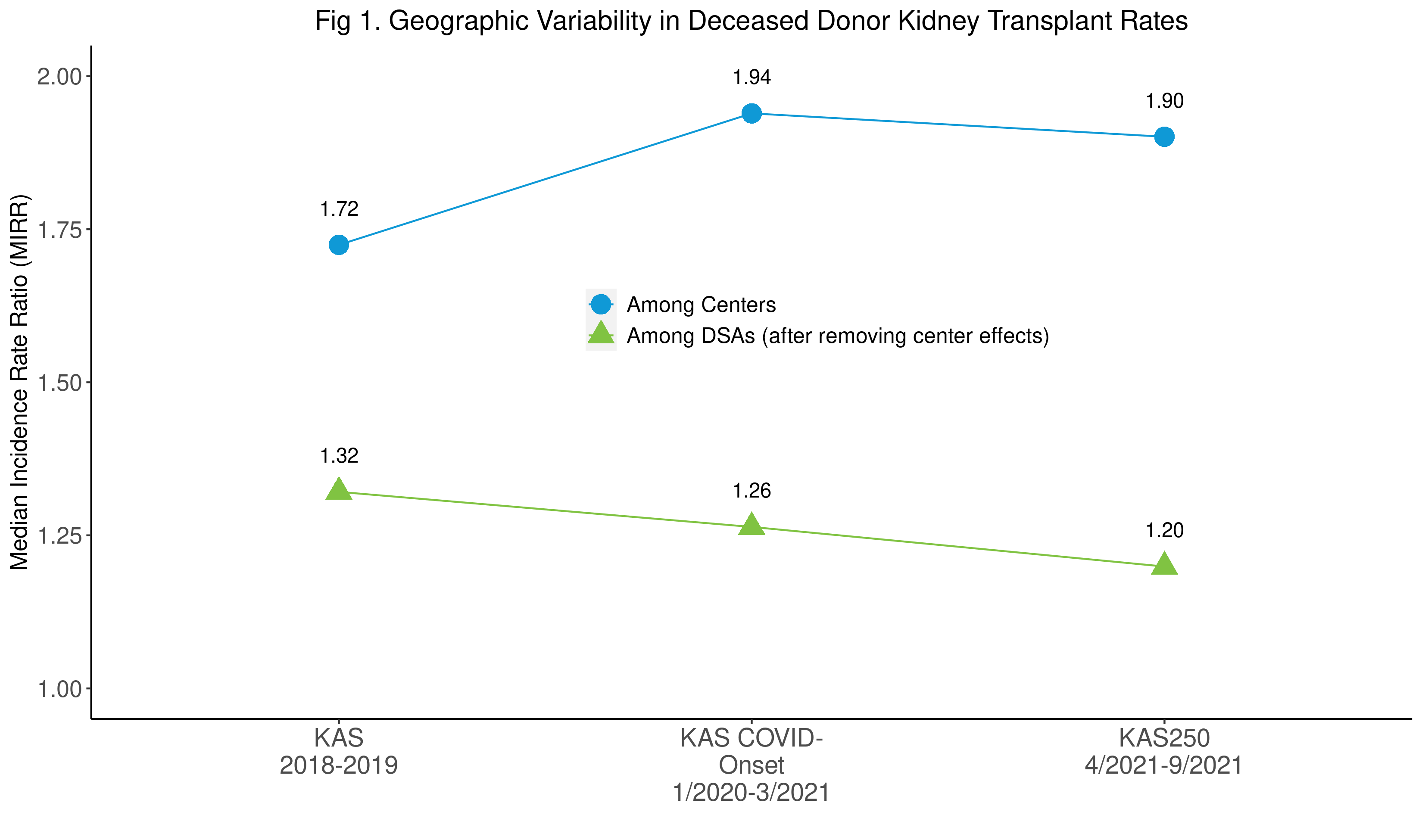Center Variation is the Major Driver of Geographic Disparities in Access to Kidney Transplants Among Waitlisted Candidates
United Network for Organ Sharing, Richmond, VA
Meeting: 2022 American Transplant Congress
Abstract number: 708
Keywords: Allocation, Ethics, Kidney transplantation, Public policy
Topic: Clinical Science » Kidney » 31 - Kidney Deceased Donor Allocation
Session Information
Session Name: Kidney Deceased Donor Allocation
Session Type: Poster Abstract
Date: Saturday, June 4, 2022
Session Time: 5:30pm-7:00pm
 Presentation Time: 5:30pm-7:00pm
Presentation Time: 5:30pm-7:00pm
Location: Hynes Halls C & D
*Purpose: The OPTN’s monitoring of equity in access to deceased donor kidney (KI) transplants (tx) among waitlisted candidates has consistently found service area (DSA) of listing as the factor most independently associated with access disparities. We extracted center-level from DSA-level effects to better characterize geographic disparities in the COVID-19 and KAS 250NM circle eras.
*Methods: Poisson tx rate regression, with random DSA and center effects, was applied to 3 period-prevalent cohorts (KAS: 2018-2019; KAS COVID Onset: 1/2020-3/2021; KAS250: 4/2021-9/2021) of active KI waiting list registrations using OPTN data. Risk-adjusted, population-weighted, factor-specific disparities were quantified as the Winsorized standard deviation (SDw) of log(tx rate) among registrations, holding other factors constant. Geographic disparity was also quantified by median incidence rate ratios (MIRR), interpreted as the median increase in tx rate if a candidate switched to a random, higher tx rate center or DSA. The association between donor supply to demand ratios (S/D; # deceased kidney donors / # prevalent WL candidates) and residual (after removing center effects) DSA effects was assessed with Spearman’s ρ.
*Results: Pre-COVID, variation in tx rates was markedly higher for centers (MIRR 1.72) vs. DSAs (MIRR 1.32). Under COVID, center-level MIRR rose to 1.94 and has remained high. The DSA-level MIRR fell to 1.20 in the early KAS250 era (Fig 1).
As measured by population-weighted SDw, tx center (0.62) is the factor most associated with unintended disparities in the KAS250 era, with residual DSA-level variation (0.25) ranked 4th (Fig 2). Residual DSA effects were positively correlated (ρ=0.55, p<0.001) with local S/D.
*Conclusions: DSA-level variation declined under KAS250, but disparities remain and are associated with differential local S/D. Tx center-level variation is the top driver of access disparities and may have been exacerbated by COVID. Further reductions in geographic disparities may be possible through allocation policy changes, although other interventions – such as reducing center variation in offer acceptance decisions and maximizing the recovery of potential deceased donors – may have greater impacts.
To cite this abstract in AMA style:
Stewart D, Robinson A, Wilk A, Klassen D. Center Variation is the Major Driver of Geographic Disparities in Access to Kidney Transplants Among Waitlisted Candidates [abstract]. Am J Transplant. 2022; 22 (suppl 3). https://atcmeetingabstracts.com/abstract/center-variation-is-the-major-driver-of-geographic-disparities-in-access-to-kidney-transplants-among-waitlisted-candidates/. Accessed December 29, 2025.« Back to 2022 American Transplant Congress


